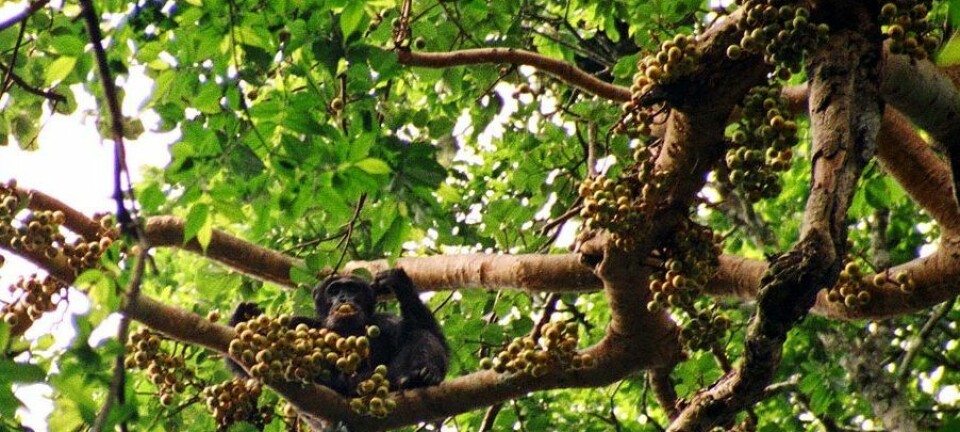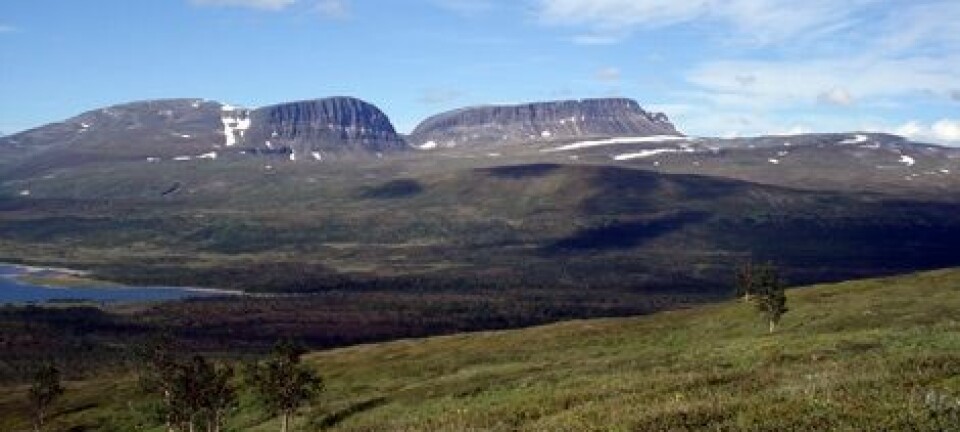
How do trees know when to awake in spring?
Trees can see, feel and calculate time. Norwegian researchers have helped reveal another of trees’ tricks for surviving frigid winters.
Trees can take terrible abuse.
Some species survive a bath in liquid nitrogen, at -196° C. And most trees in Nordic climates can handle winter temperatures down to -45° C.
But such feats require a plan. They have to be prepared. Above all, they need the right timing.
Trees in cooler climates need to protect their future branches when autumn comes and the chances of frost increase.
The tree stops growing. Leaves are drained of nutrients and shed. And the vulnerable points of growth – where they have stem cells that can make new leaves and twigs – are encapsulated in a winter bud consisting of hard bud scales. Inside they are pumped full of antifreeze to prevent from rupturing.
Thus the tree can be dormant for months, withstanding frost and snow. They burst into life just as winter lets go.
Weather fluctuates, and seasons are often unsteady. How do trees ‘know’ it is really time to start their spring routines?
Air temperatures can be capricious. In Norway it might be upwards of 12° in December and 15° in February. Jumping the gun can be catastrophic.
How do plants avoid that disqualifier?
Blocking signals
Botanists have searched for the answers for decades.
In the 1960s it was discovered that the plant hormone abscisic acid (ABA) plays a vital role. Buds do not remain dormant long enough without receiving this signal compound, but scientists have been uncertain about how ABA actually works.
“Winter dormancy has been a mystery,” says Professor Torgeir Rhoden Hvidsten at the Norwegian University of Life Sciences (NMBU). He is a member of an international research team that has found the answer. They recently published their results in the journal Science.
They showed that plants actually block communication between the cells inside the winter bud, preventing growth cells from emerging.
“The hormone ABA initiates production of the regulator compound callose, which in turn constricts the channels between the cells in the winter bud,” says Hvidsten.
“And these blockings require a long cold period to break up.”
The channels do not re-open until deep into spring, thus allowing the cells to again get the message to start growth. This prevents unseasonal warm periods in winter from enticing the buds to sprout.
Genetically modified aspen
Professor Jorunn Elisabeth Olsen at NMBU has done his own research on the winter dormancy of trees for years but was not involved in this study.
She is intrigued by the results. ABA has been suspected of clogging the communication channels between cells but nobody had proved it.
Hvidsten and colleagues have now done so with genetically modified aspen. Manipulating genes is a common technique for working out how a living thing works. The function of specific genes can be determined by turning them on and off.
The scientists modified the aspen to make it insensitive to ABA. They saw the result, that these trees no longer closed the channels with callose. Their buds would then be at risk of springing out before winter’s end.
Olsen points out that this mechanism would probably not work the same with all trees.
Conifers and deciduous trees split into two evolutionary branches about 200 million years ago and have become quite different since.
“Young firs do not need any cold spell to start growing again, even though the budding occurs more quickly if it has had the chill,” says Olsen.
She and her colleagues in Norway and Canada have recently found out that firs have other ways of insulating the buds in their winter dormant periods, in addition to making callose.
Through evolution, trees of different species have developed a wide variety of impressive mechanisms for tackling the challenges of nature.
Seeing and feeling
Olsen says that trees have light sensors, not unlike the receptors we have in our eyes. Leaves, green stems and the tips of roots can see in red and blue light as well as in UVB radiation. This enables them to register the length of daylight. Some trees require very long days before their buds will sprout.
Trees can also register temperatures. People who frequent forests can testify to how just a couple of warm spring days can do wonders.
But why don’t these trees in Nordic countries spring out after a comparable couple of warm days in the end of February?
Fortunately, trees have quite a bag of tricks. Plants can do more than register heat. They can also calculate how long it has been warm.
“A heat sum is accumulated,” says Olsen.
“This means that it does not matter so much if a little heat is experienced for a shorter period.”
Epigenetics
What is a problem, however, is taking seeds from trees in the south and planting them further north. The mother plant that produced the seeds has also packed it with information about the climate. The new tree that grows will be adapted to the environment in the mother tree’s home turf but not necessarily in a new site far away.
“That phenomenon was discovered at seed plantations,” says Olsen.
People found that there were differences in how robust seeds were and that this did not hinge entirely on where the parent tree originally came from. When mother trees were moved further south their seeds became less tough than seeds from the north even though they came from trees with completely identical genes.
This discovery was initially scoffed at, because living conditions were not supposed to change a living individual’s genes!
Today we know that the observations with fir seeds represented a prominent step toward the discovery of epigenetics.
According to epigenetics, living conditions are not altering genes, but they can change the way genes are regulated. The environment can turn genes off or on and this regulation can be inherited by the next generation.
Before this was understood, seeds were taken from the south and planted in the north. The result was frost damage in the autumn and spring, because the new trees were not prepared for the freeze to come so early and last so long.
Little known about old trees
Both Hvidsten and Olsen have contributed to current knowledge about how trees survive the winter. But there is much more to learn.
For instance, to date it has been hard to genetically modify fir trees the same was as with aspens. This has made it tough to figure out how plant hormones like ABA work in firs.
Olsen points out that another matter is that nearly all detailed research on winter dormancy has been conducted with young trees. Much indicates that older trees work differently.
“We see for example that old trees form winter buds already before mid-summer. But we know nothing of how this works.”
Many mysteries need solving before scientists understand how trees tackle the enormous challenge of winter.
-------------------------------------
Read the Norwegian version of this article at forskning.no.
Translated by: Glenn Ostling
Scientific links
- S. Tylewicz et.al: Photoperiodic control of seasonal growth is mediated by ABA acting on cell-cell communication, Science, March 2018. Abstract.
- Y. Lee et.al: Photoperiodic Regulation of Growth-Dormancy Cycling through Induction of Multiple Bud–Shoot Barriers Preventing Water Transport into the Winter Buds of Norway Spruce, Frontiers in Plant Science, December 2017. Abstract.

































